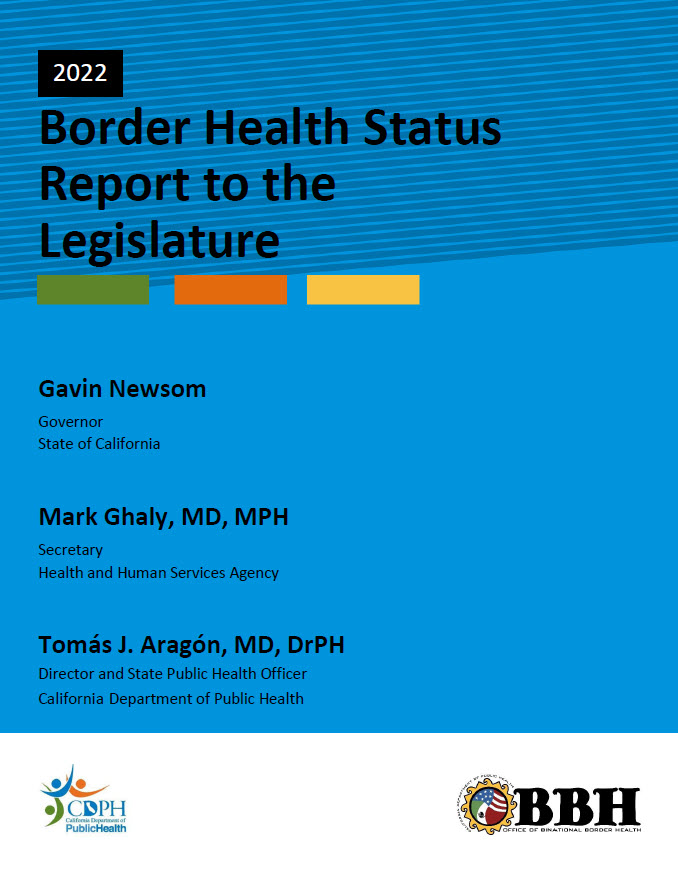Border Health Status Report to the Legislature
Annually, the Office of Binational Border Health (OBBH) publishes the Border Health Status Report to the Legislature to provide a general overview of the health status of border communities in the California border region. The 2022 report (PDF) includes the following topics:
